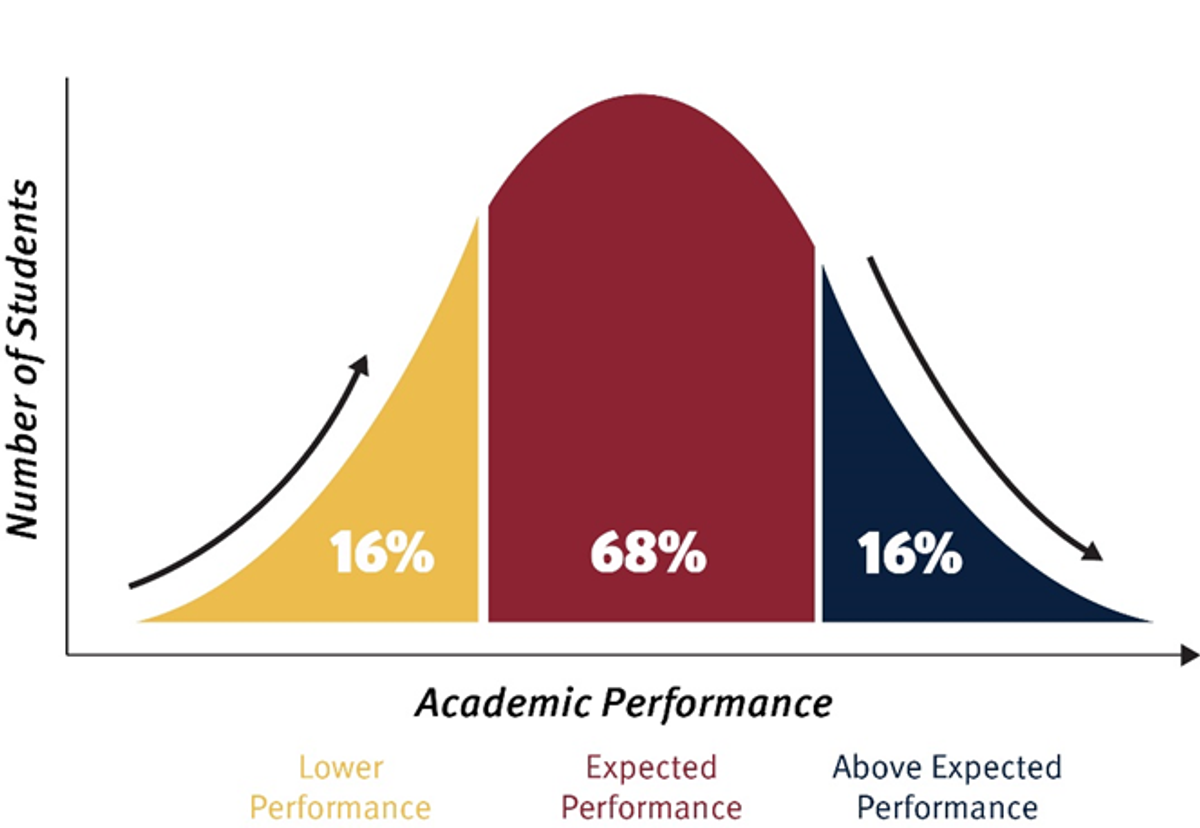Introducing our new assessment model

At Girton Grammar School, we are committed to providing a rich and rigorous educational experience for our students, anchored within a culture of academic excellence. This commitment is at the heart of our 2023–28 Strategic Plan, where our first priority is to deliver diverse teaching and learning pathways with high standards and exceptional outcomes.
To support this priority, one of our key areas of focus this year has been to develop an evidence-based School-wide approach to assessment that not only measures, but strengthens, student learning. While our current assessment system has delivered excellent results, with our students consistently performing above national and state averages, we recognise the dynamic nature of the educational landscape and remain dedicated to continually improving our teaching and learning practices for the benefit of our students and the wider School community. The implementation of the new Australian Curriculum (Version 9.0) in 2024 also presents an ideal opportunity to introduce new assessment methods based on the Achievement Standards set by ACARA.
Earlier this year, we established a working group under the leadership of Ms Jinari Mountain with the aim of devising a fair, rigorous and adaptable new assessment framework that would support excellent student outcomes and align with best practices and legislative requirements. Now, after many months of research and review, I am pleased to share that Girton will be implementing whole-School procedures for the design and marking of assessments, which will be initially applied in our upcoming Senior School examinations. Following this preliminary application, the new approach will be progressively rolled out across our Junior and Senior Schools throughout 2024.
Our new assessment approach
Under the new assessment procedures, tasks will be designed and marked according to standard benchmarks. Standardised assessments are rigorously designed and scored in a predetermined manner to provide an objective and equitable means of measuring student achievement. They are commonly used in national and state assessment systems, including NAPLAN and VCE. Embracing a standardised approach to assessment across Girton Grammar will see marks spread across a normal distribution (often referred to as a bell curve), which will benefit our students in a number of ways:
- Easier comparison of marks across subjects: A standardised approach will allow grades to be more readily compared across students’ subjects, which will enable easier identification of strengths and weaknesses.
- More accurate interpretation of grades within a cohort: The new approach will enable marks to be compared across entire year levels, which will provide a more accurate understanding of a student’s achievements relative to their peers at Girton.
- Alignment with national and state data: Implementing a system that directly correlates with national and state standards and testing measures, including NAPLAN and VCE, will allow internal assessments to be more reliably compared with state and national data.
- Better preparation for VCE: Increased exposure to standardised assessment measures throughout a student’s educational journey will better prepare them for VCE, ensuring a smoother transition to their senior years of schooling with an enhanced understanding of the standard required to achieve their goals.
- Tailored support and extension opportunities: A standardised approach will allow our staff to more easily identify students who are performing above and below the expected standard, enabling them to offer targeted opportunities for extension or support.
- Consistent School-wide approach: Applying a standard marking system across all year levels and all subjects taught within our School will provide more consistency throughout each student’s educational journey.
Figure 1: Example of a traditional bell curve
What to expect
As illustrated in the figure above, under the new standardised system, we would expect the majority of students’ marks to fall around the middle of the bell curve. A mark of 50% or higher would indicate that a student is performing at or above the expected level of achievement for their year level. Marks above 85% would be reserved for exceptional performance, typically above the expectations for the student’s year level. As these high marks would be more difficult to attain, we expect average marks from Prep to Year 10 to decrease across the School as the new approach is implemented, meaning you may notice a difference in your child’s marks compared to those you have seen in the past.
While we acknowledge this new approach will require an adjustment for our School community, we are confident it will provide a more objective, accurate and consistent representation of a student’s achievement as they progress throughout Girton Grammar, fostering an environment of academic excellence.
To help our Senior School students prepare for the transition ahead of their examinations, I will be presenting the new assessment model in next Monday’s Principal’s Assembly, and discussions will also be facilitated among House Tutor groups. I encourage you to continue this dialogue with your children at home to help manage their expectations for the upcoming examinations. In particular, it is important students understand that any mark above 50% indicates that they are performing at or above the expected standard.
Next steps
As we progress throughout 2024, our staff will begin to apply the new approach to all aspects of assessment – from reportable tasks such as examinations, to in-class learning. In early 2024, the new system will be thoroughly outlined in a comprehensive Assessment Policy and Procedures document, which will guide teacher practice, and provide students and families with a clear understanding of our School’s assessment procedures and the rationale behind them. We will keep our parent community informed as the new system is rolled out, including sharing the policy and procedures when they are published, and providing dates for the initial implementation in Junior School.
This review of Girton’s assessment practices is the first stage of a more comprehensive project focused on further strengthening our students’ educational outcomes. The next phase of the journey will centre on enhancing the way we report on assessments, which will include releasing a five-point scale to report student results against defined achievement levels. Our working group will commence work on the new reporting model in early 2024.
We appreciate your support and understanding as we embark on this exciting journey to enhance our assessment practices at Girton Grammar School, and further strengthen the educational experience we offer our students.
Jay Weston
Deputy Principal

